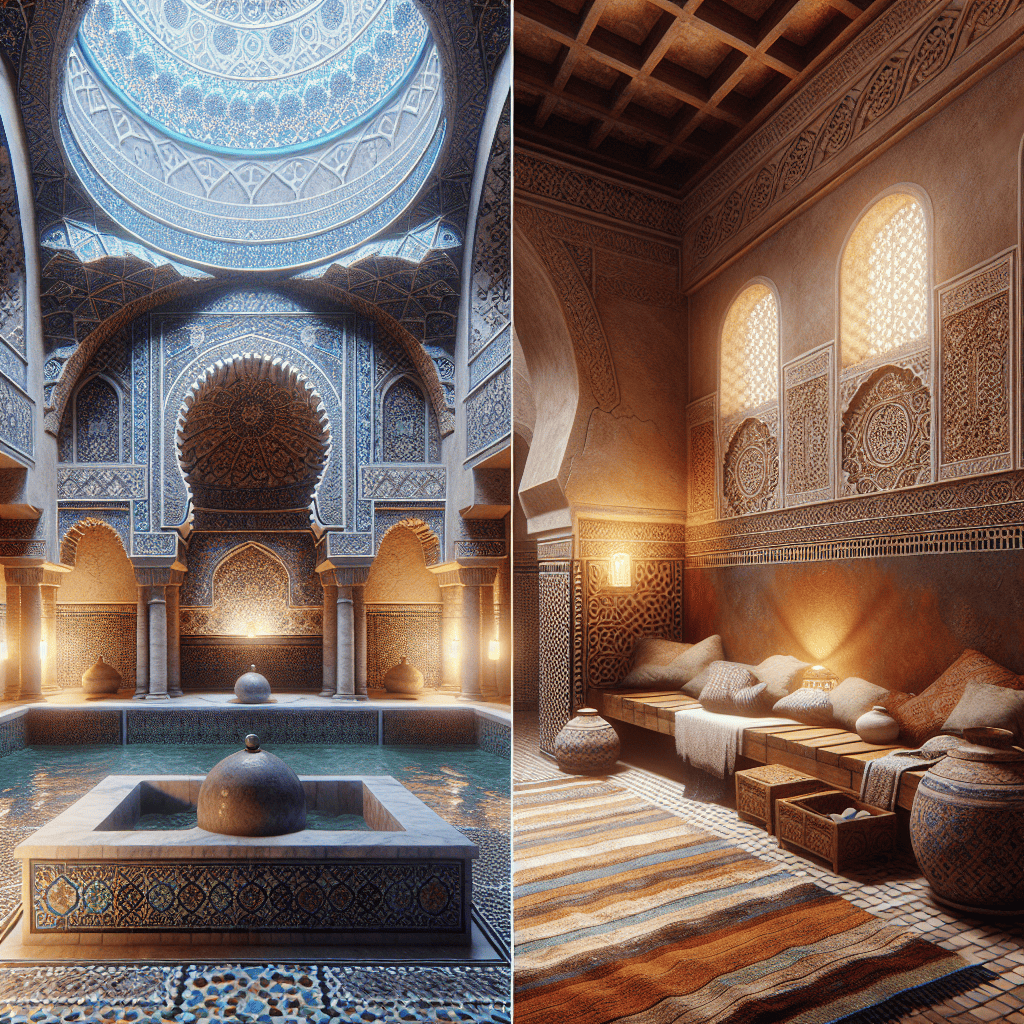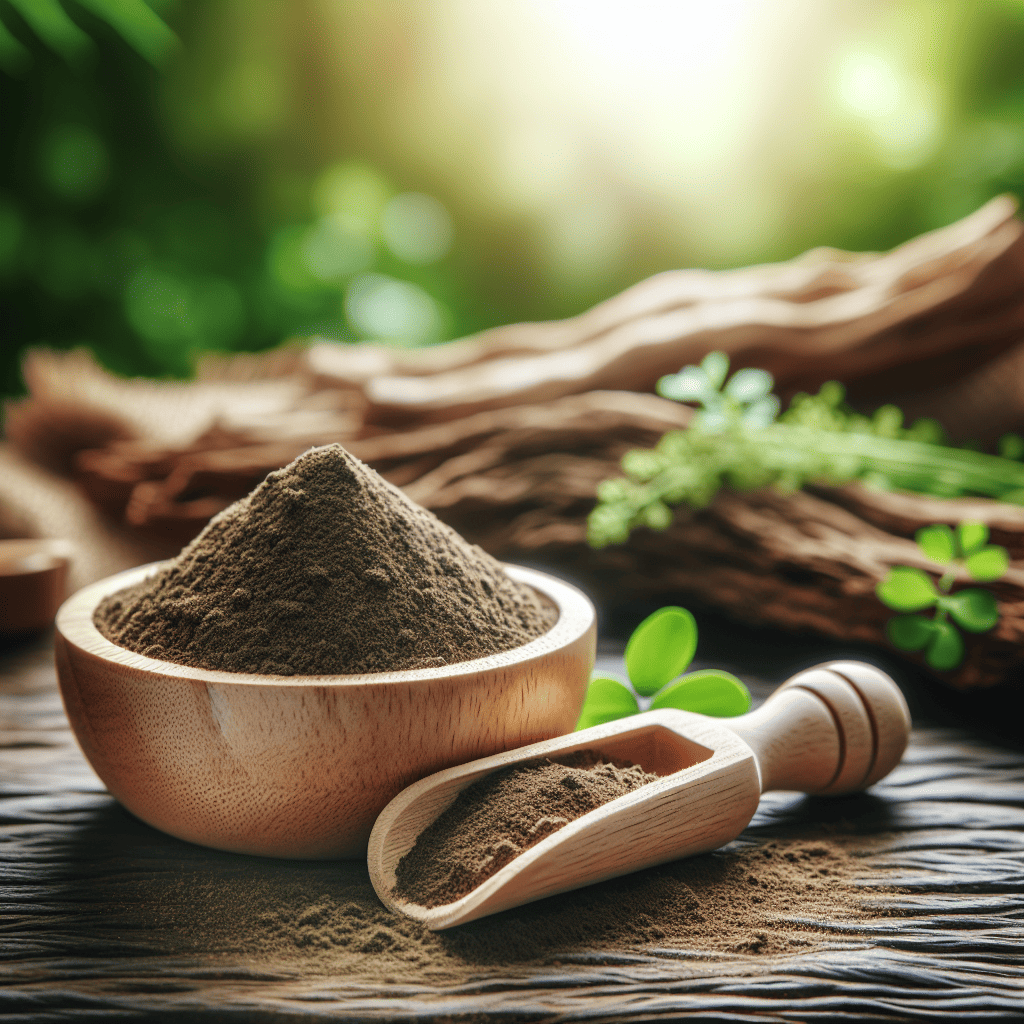Introduction: Turkish bath and Moroccan bath are renowned for their relaxation and detoxification benefits, with each offering unique experiences. This detailed guide delves into the benefits of each type of bath and provides step-by-step instructions for creating a spa-like ambiance at home.
Table of Contents
Benefits of Turkish Bath
Discover the therapeutic advantages and skin benefits of indulging in a Turkish bath.
- Stress Relief and Muscle Relaxation:
One of the key benefits of a Turkish bath is its ability to relieve stress and tension while promoting muscle relaxation. The Turkish bath, also known as a hammam, provides a serene and tranquil environment where the combination of steam and heat helps to ease muscle tension and reduce stress levels. The heat from the steam helps to dilate blood vessels, improving circulation and oxygen flow to the muscles. This enhanced circulation not only aids in muscle recovery but also helps in the elimination of toxins from the body. Overall, a Turkish bath can be a rejuvenating experience for both the body and mind, offering a holistic approach to relaxation and wellness.
In addition to muscle relaxation and stress relief, a Turkish bath can also have benefits for the skin. The steam and heat in the hammam open up the pores, allowing for a deep cleansing and detoxification of the skin. This process helps to remove impurities, dead skin cells, and excess oil, leaving the skin feeling refreshed and revitalized. The moist heat also improves skin hydration, promoting a radiant and healthy complexion. Regular visits to a Turkish bath can contribute to maintaining skin health and reducing the effects of environmental pollutants and everyday stressors on the skin.
Another advantage of incorporating Turkish baths into your wellness routine is the mental relaxation it offers. The calming ambiance of a hammam, combined with the warm steam enveloping the body, can help to alleviate anxiety and promote mental clarity. The sensory experience of the Turkish bath, from the gentle warmth to the soothing scents of essential oils, creates a peaceful retreat where you can unwind and recharge. This mental relaxation can have long-lasting effects, helping to improve overall well-being and resilience to daily stressors. Whether as a regular self-care practice or an occasional treat, a Turkish bath can provide a sanctuary for relaxation and rejuvenation.
- Skin Purification and Detoxification:
Turkish baths, also known as hammams, are traditional bathing facilities that date back centuries and are an integral part of Turkish culture. These baths not only provide a cleansing ritual but also offer a social and relaxing experience for visitors. The process typically involves a series of steps, starting with the heated room where the body is warmed up to help open the pores. This initial step is crucial as it prepares the skin for the subsequent treatments.
As the heat and steam work their magic on the body, toxins are released through sweat, helping to detoxify the skin. The combination of heat and steam softens the skin, making it easier to remove impurities such as dirt, oil, and dead skin cells. This deep cleansing action not only promotes overall skin health but also improves its texture and appearance. Additionally, the steam helps to improve circulation, which can have a rejuvenating effect on the skin, leaving it looking fresh and glowing.
Moreover, Turkish baths are not only beneficial for the skin but also have a therapeutic effect on the mind and body. The heat and steam can help relax muscles, reduce stress, and promote a sense of well-being. The entire experience of a Turkish bath is designed to offer a holistic approach to health and wellness, combining physical and mental benefits. By incorporating regular visits to Turkish baths into their routine, individuals can not only maintain the health of their skin but also find a peaceful retreat to unwind and recharge.
Benefits of Moroccan Bath
Explore the therapeutic and aesthetic advantages of indulging in a Moroccan bath.
- Dead Skin Removal and Skin Toning:
Moroccan baths, also known as hammam, are traditional cleansing rituals that have been practiced for centuries in Morocco and other parts of the Middle East. The process involves a series of steps, starting with a steam session to open up the pores and soften the skin. This is followed by the application of black soap, which is a natural exfoliant made from olive oil and eucalyptus. The therapist will then use a special glove called a kessa to scrub the skin vigorously, removing dead skin cells and impurities. This exfoliation process not only leaves the skin feeling incredibly soft and smooth but also helps to improve circulation and promote lymphatic drainage.
In addition to the exfoliation benefits, Moroccan baths are also known for their relaxing and therapeutic qualities. The steam and heat help to relax the muscles, reduce tension, and alleviate stress. The eucalyptus in the black soap creates a refreshing and invigorating aroma, which can help clear the sinuses and improve respiratory function. Many people find the entire hammam experience to be incredibly soothing and rejuvenating, both for the body and the mind. It is a great way to unwind and pamper yourself after a long week or as part of a self-care routine.
The deep cleansing and detoxifying properties of Moroccan baths make them an excellent treatment for improving overall skin health. By removing dead skin cells and unclogging pores, the skin is able to breathe more easily and absorb skincare products more effectively. This can result in a clearer complexion, reduced breakouts, and a more youthful appearance. Regular sessions of Moroccan baths can help maintain the health and vitality of the skin, making it a popular choice for those looking to achieve radiant and glowing skin. Overall, Moroccan baths offer a holistic approach to skincare, combining exfoliation, relaxation, and detoxification for a truly rejuvenating experience.
- Stress Reduction and Cellulite Control:
Moroccan baths offer benefits beyond stress reduction, with one notable advantage being their ability to combat cellulite. This common skin concern is characterized by the accumulation of fat deposits underneath the skin, resulting in a dimpled or lumpy appearance. The exfoliation process in a Moroccan bath helps to remove dead skin cells and unclog pores, allowing for better absorption of skincare products that target cellulite. Additionally, the massage techniques used in these baths help to break down fat deposits, stimulating the lymphatic system to eliminate toxins and reduce the appearance of cellulite. By improving blood circulation and promoting detoxification, Moroccan baths contribute to smoother skin texture and a reduction in the visibility of cellulite.
The exfoliation performed in a Moroccan bath plays a crucial role in combating cellulite. By sloughing off dead skin cells, the exfoliation process helps to improve blood circulation and lymphatic drainage, essential for reducing the appearance of cellulite. This removal of the outer layer of skin not only enhances the penetration of skincare products but also promotes cell renewal, leading to firmer and smoother skin over time. The combination of exfoliation, massage, and detoxification in a Moroccan bath creates a holistic approach to addressing cellulite by targeting its root causes while simultaneously improving skin health. The activation of the body’s natural processes through these treatments can result in long-lasting benefits for individuals seeking to diminish cellulite and achieve healthier skin overall.
Furthermore, the detoxification aspect of Moroccan baths contributes significantly to their effectiveness in combating cellulite. The sweating induced by the steam and heat in the bath helps to expel toxins from the body, including those stored in fat cells that contribute to the formation of cellulite. By aiding in the removal of these toxins through the skin, Moroccan baths support the body’s natural detoxification processes, which can lead to a reduction in the appearance of cellulite. The combination of exfoliation, massage, improved circulation, and detoxification offered by Moroccan baths creates a comprehensive solution for addressing cellulite concerns while promoting overall skin health and well-being.
Ingredients and How to Make Turkish Bath at Home
Detailed instructions on creating the relaxing Turkish bath experience in the comfort of your home.
- Ingredients:
To recreate a Turkish bath at home, one can start by gathering all the essential ingredients and supplies. Baladi or natural soap is a crucial element in traditional Turkish baths for its gentle cleansing properties. It is recommended to use a soap that is free from harsh chemicals and fragrances to maintain the authenticity of the experience. An exfoliating body scrub is another essential item to incorporate into the home spa session. This helps to remove dead skin cells and promote skin renewal, similar to the exfoliation process in a Turkish bath.
In addition to the soap and body scrub, clay or ground lupine can be used for a deep cleansing facial mask during the Turkish bath experience. Clay has purifying and detoxifying properties, while lupine powder can help in gently exfoliating and rejuvenating the skin. Rose water is a staple in Turkish beauty rituals and can be used as a facial toner or refreshing mist during the at-home spa session. The subtle fragrance of the rose water adds a touch of luxury and relaxation to the overall experience.
To complete the Turkish bath experience, it is recommended to have a favorite perfume on hand to lightly spritz after the skincare routine. This adds a personal touch to the relaxation process and can uplift the mood. Furthermore, using a rich moisturizing cream or special oil at the end of the home spa session can help to lock in moisture and nourish the skin. Opt for a cream or oil that suits your skin type to ensure maximum hydration and pampering. By following these steps and incorporating these key elements, one can create a rejuvenating Turkish bath experience right in the comfort of their own home.
- How to Work:
To create a relaxing and rejuvenating home spa experience akin to a luxurious Turkish bath, begin by setting the ambiance in your bathroom. Start by warming the space by turning up the heat or using a space heater to ensure a comfortable temperature. You can also light some scented candles or use essential oils in a diffuser to create a soothing atmosphere. Soft, calming music playing in the background can also enhance the overall spa experience.
Once you have set the mood, draw a hot bath to soak in. The hot water will help to relax your muscles and open up your pores. You can add some bath salts or essential oils like lavender or eucalyptus for added relaxation and aromatherapy benefits. While soaking in the tub, you can use this time to meditate, read a book, or simply close your eyes and unwind.
After soaking, it’s time to pamper your skin. Start by cleansing your body with a gentle soap or body wash to remove any dirt and impurities. Then, exfoliate your skin using a scrub to slough off dead skin cells, leaving your skin soft and smooth. You can make a DIY scrub using ingredients like sugar, salt, or coffee grounds. For a traditional Turkish bath experience, consider using clay or ground lupine as a natural and purifying skin treatment. Finish off by applying a rich moisturizing cream or nourishing oil to hydrate and soothe your skin, leaving you feeling refreshed and pampered.
Ingredients and How to Make Moroccan Bath at Home
Step-by-step guide to creating an authentic Moroccan bath experience in your own space.
- Ingredients:
A Moroccan bath is a luxurious and revitalizing spa treatment that one can easily recreate at home with the right ingredients. To start with, bay soap is a key component known for its cleansing properties and the sweet fragrance it imparts. White henna, not to be confused with traditional henna used for body art, is used in Moroccan beauty rituals for its conditioning and softening effects on the skin. Turbid Fassi, a traditional Moroccan black soap, is rich in minerals and is excellent for exfoliating and detoxifying the skin.
Another integral ingredient for a Moroccan bath is Moroccan clay, which is known for its purifying and soothing properties. This clay helps to draw out impurities from the skin and leaves it feeling refreshed and rejuvenated. Rose water, with its anti-inflammatory and hydrating properties, is often used in Moroccan baths to tone and moisturize the skin. Ground lavender adds a relaxing and aromatic element to the bath, creating a calming atmosphere for a spa-like experience.
To enhance the exfoliation process during the Moroccan bath, rough fiber and a pumice stone are essential tools. The rough fiber helps in sloughing off dead skin cells, promoting circulation, and leaving the skin smooth and glowing. A pumice stone can be used on rough areas of the skin, such as heels and elbows, to gently remove calluses and improve skin texture. By incorporating these ingredients and tools into your at-home Moroccan bath routine, you can enjoy a pampering experience that nourishes both your body and mind.
- How to Work:
Creating a steam-filled environment is a crucial first step in a Moroccan bath session at home. Begin by running hot water in the bathroom to create steam. The steam helps to open up the pores on the skin, making it easier for the ingredients in the scrub to penetrate and do their work effectively. You can also enhance the steam by adding a few drops of essential oils like eucalyptus or lavender to create a refreshing and relaxing atmosphere.
After the steam has worked its magic, it’s time to apply a mixture of ingredients on the skin for exfoliation. The scrub mixture typically consists of natural ingredients like ground coffee, sugar, or oatmeal mixed with olive oil, honey, or yogurt. Gently massage the scrub onto the skin in circular motions to remove dead skin cells and reveal smoother, softer skin. Exfoliation not only helps in removing impurities but also promotes blood circulation and cell regeneration, leaving your skin rejuvenated and glowing.
To further detoxify the skin, you can use clay and rose water in your Moroccan bath session. Clay, such as Rhassoul clay, is known for its cleansing and purifying properties. Mix the clay with rose water to create a paste and apply it to the skin. Leave it on for a few minutes to allow the clay to extract impurities and toxins from the skin. Rose water, on the other hand, helps to tone and hydrate the skin, leaving it refreshed and rejuvenated. After the clay mask, rinse off with warm water to reveal deeply cleansed and nourished skin. Finish off the Moroccan bath session by closing the pores with a refreshing splash of cold water or by applying a hydrating moisturizer to lock in the benefits of the treatment.




